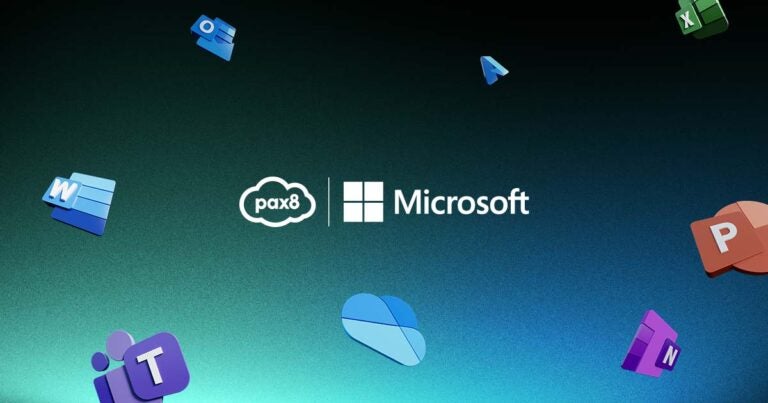The importance of maintaining a strong cybersecurity posture cannot be overstated. Cybersecurity incidents have become more frequent and sophisticated, targeting businesses of all sizes. As a managed service provider (MSP), you need to mitigate the financial risks your clients face from these incidents, so you’ll need to advise them on finding the right cyber insurance policies and staying in compliance with them.
In this blog, we’ll explore what kinds of cyber insurance your clients will need, why these policies are needed, and what kinds of solutions you can provide them to stay compliant.
Why do your clients need cyber insurance?
Cyber insurance policies provide coverage for a range of cyber incidents, including data breaches, ransomware attacks, and more. But they may also be confusing for your clients because they may be paying you for some cybersecurity solutions. You need to explain that they need both the insurance policy and a robust cybersecurity posture with the right solutions in place to both prevent incidents and reduce their liability.
Getting the right insurance can also be tricky. Premiums are going up, and your clients may not understand what policies they need and how to keep costs down. So, before we delve into how your clients can stay in compliance with their policies, we’ll take a look at the common policies that are recommended to keep small- to medium-sized businesses (SMBs) safe.
What is E&O insurance?
Errors and Omissions (E&O) insurance is a type of professional liability insurance. It helps protect companies and their employees against claims of inadequate work or negligence their end customers might make, such as if a deadline is missed or if there’s a failure to meet a certain standard.
Essentially, any company that provides a service to end customers should get E&O insurance to protect them against the full claim if someone accuses them of making a mistake. It can cover legal and court costs as well as certain types of settlements, but it doesn’t cover illegal acts or intentional wrongdoing.
As an MSP, you should also have E&O insurance to protect yourself in case any claims are brought against you. In general, E&O insurance will cost between $500 and $1,000 per employee, per year.
What is cybersecurity insurance?
Cybersecurity insurance, also known as cyber liability insurance or cyber insurance, reduces financial risk from doing business online. It protects against financial losses from cyber incidents and the fallout, including remediation, legal assistance, and refunds to end customers.
Cybersecurity insurance is separate from E&O insurance, and it’s a good idea to have both in place to make sure you’re fully covered. That’s because E&O won’t protect against data loss, such as end customer credit card information. In general, you can get both policies from the same types of business insurance suppliers.
How do you stay in compliance with these policies?
To enact these policies, your clients will have to attest to certain proactive measures they’re taking, such as using multi-factor authentication (MFA). But as an SMB, they may not have the knowledge base in place to correctly attest to what they’re doing, which could get them into trouble in the event of an incident. It would be like telling your car insurance provider that your car has airbags when it doesn’t, such as in a recent case in which Travelers Insurance sued to get out of covering a company that misrepresented using MFA.
As an MSP, it’s your job to advise your clients and help them through this process. Walk through any questionnaires with them and ensure they’re being answered correctly to avoid opening them up to having breached their policy by making false claims.
As a side note, it’s also a best practice to split risk mitigation from technology services on your invoices. That will ensure your clients are aware that technology solutions do not, in and of themselves, provide equal protection from fallout due to an incident, and you should be compensated accordingly for providing each of these services.
It’s also crucial to understand that cyber insurance policies come with specific requirements that policyholders must comply with. Doing so can also help keep the cost of these policies down.
The solutions your clients need to stay in compliance
The following are the top five solutions your clients need to ensure their cyber insurance policies remain affordable and effective.
1. Advanced threat protection
It’s not enough to have the built-in threat protection that comes with your average business solutions. Cybercriminals are continually evolving their tactics, and businesses need to bolster their defenses accordingly.
Advanced threat protection is a critical component of any cybersecurity strategy. These solutions protect against more complex cyberattacks, such as malware and phishing campaigns.
This involves such components as cloud security, advanced email threat protection, and advanced threat analysis. Advanced threat protection also helps you anticipate and prevent security incidents before they happen.
2. Multi-factor authentication (MFA)
Password-based authentication isn’t enough to protect your digital assets. Passwords can be guessed or stolen, leaving clients open to being compromised. In fact, 91% of cyberattacks begin with a phishing email, while 32% of all successful breaches involve phishing.
That’s why cyber insurance policies often mandate MFA implementation. MFA adds an extra layer of security by requiring users to provide multiple forms of identity verification before gaining access to systems or data. MFA can take various forms, such as fingerprint scans or one-time passwords sent to a phone.
3. Endpoint detection and response (EDR)
In the modern work environment, people aren’t just working on their computers; they’re using tablets, cell phones, and other personal devices (known as BYOD, or “bring your own device”). These devices represent endpoints that are prime targets for cybercriminals due to lack of consistent security practices across devices and environments.
EDR solutions are designed to monitor end-user devices to detect and respond to cyberthreats like ransomware and malware. They work by recording activities on all endpoints and workloads, providing security teams with visibility to better track incidents that would otherwise go unseen. The EDR solution should also help you contain and remove the threat. The idea is to quarantine a possible threat as early as possible so it doesn’t run amok before it can be eliminated.
4. Security awareness training
While technology is a vital aspect of cybersecurity, employees remain a critical factor in defending against cyberthreats. Phishing attacks, social engineering, and human error can all compromise an organization’s security.
To address this vulnerability, cyber insurance policies often require ongoing security awareness training programs. These programs educate employees about the latest threats, how to recognize them, and how to respond appropriately. It should involve everyone from the CEO to temps to foster a cybersecurity-conscious culture throughout the organization, as your cybersecurity posture is only as strong as its weakest link.
5. Segregated backups
Ransomware attacks, where cybercriminals encrypt critical data and demand ransoms for its release, have become increasingly prevalent. To counteract these threats, maintaining segregated backups is crucial.
Segregated backups involve storing copies of critical data in different locations. Data should be categorized based on factors such as sensitivity, regulatory requirements, or business criticality, and then stored in distinct, secure storage systems accordingly. This practice ensures that data remains intact and accessible in the event of an incident. Many insurance providers require segregated backups as a risk mitigation strategy.
The importance of compliance
Failure to comply with the stipulations of your cyber insurance policy can have severe consequences. In the event of a cyber incident, insurers may deny coverage, leaving your client to bear the full financial burden. They could also cancel the policy altogether or increase premiums. The combined cost of system repairs, data recovery, fines, and legal fees can be disastrous for SMBs, so it’s crucial to get their buy-in and ensure they stay in compliance.
Bringing together all the disparate parts of a comprehensive cybersecurity strategy complete with the right cyber insurance policy may seem daunting, but it’s a must in today’s day and age, when cyber incidents are all too common. Round out your strategy by reaching out to your Pax8 representative to make sure you’re offering the best cybersecurity and continuity solutions for your clients on the Pax8 Marketplace.




